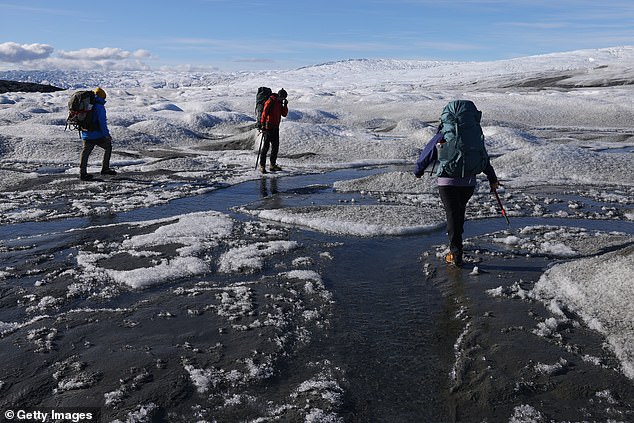
"Arctic Thaw Risks Unleashing Deadly ‘Zombie Viruses’ and Pandemic, Scientists Warn"
Arctic Thaw Could Unleash Ancient "Zombie Viruses," Sparking Pandemic Fears
As the world recovers from COVID-19, scientists warn that climate change may fuel the next pandemic—by awakening ancient viruses trapped in Arctic ice. Dubbed "zombie viruses" or "Methuselah microbes," these pathogens, frozen for millennia, could re-emerge as rising temperatures melt permafrost and glaciers.

Melting ice in the Arctic risks releasing ancient viruses, scientists warn.
Reviving Ancient Threats
Permafrost—ground frozen for thousands of years—preserves viruses and bacteria in dormant states. In 2014, researchers revived a 30,000-year-old Pithovirus sibericum from Siberian permafrost, proving its ability to infect amoebas. Similarly, a 48,500-year-old amoeba virus was resurrected in 2023. Glaciers also harbor threats: 1,700 ancient viruses, some 41,000 years old, were recently discovered in a Tibetan glacier.

Pithovirus sibericum, revived from 30,000-year-old permafrost, remains infectious.
How Thawing Spreads Risk
When permafrost thaws, dormant pathogens re-enter ecosystems. Disturbances like mining or drilling accelerate this release. In 2016, anthrax spores from a 75-year-old reindeer carcass infected dozens in Siberia, killing a child. Worse, viruses like Pacmanvirus lupus—a 27,000-year-old relative of African swine fever—can survive in frozen animal remains and infect modern hosts.

Thawing mammoth or wolf remains (pictured) may release ancient pathogens.
Zoonotic Jump: A Global Threat
Over 75% of human infections originate in animals. Arctic thaw increases human-wildlife contact, raising risks of zoonotic spillover. For example, Toxoplasma gondii and Hantavirus are already spreading in the region. Ancient viruses, unfamiliar to our immune systems, could trigger deadly outbreaks.
Why the Arctic Is a Hotspot
The Arctic lacks robust health infrastructure, allowing diseases to spread undetected. Dr. Khaled Abass warns, "What happens in the Arctic doesn’t stay there—environmental stressors have global ripple effects." With glaciers predicted to vanish by 2100, up to four sextillion microbial cells could escape annually.

Glaciers hold vast numbers of viruses, which may be released as ice melts.
Preparing for the Unknown
While most thawed microbes pose minimal risk, the sheer volume heightens pandemic potential. Researchers urge proactive surveillance and climate action to mitigate this "ticking time bomb." As Dr. Abass notes, "Climate change is melting barriers between ecosystems, animals, and people—we must be ready."
The Arctic’s thawing frontier reminds us that the past’s pathogens could shape our future—unless global cooperation addresses both climate and health security.
Fact Box: Notable "Zombie Viruses"
- Pithovirus sibericum: Infectious after 30,000 years.
- Pacmanvirus lupus: Found in 27,000-year-old wolf intestines.
- Mollivirus sibericum: Survived 30,000 years frozen.
- Anthrax: Caused a 2016 outbreak after 75 years in permafrost.


